Pancakes, Euphoria, and a Robot Parade: Inside MIT's Grueling Puzzle Competition
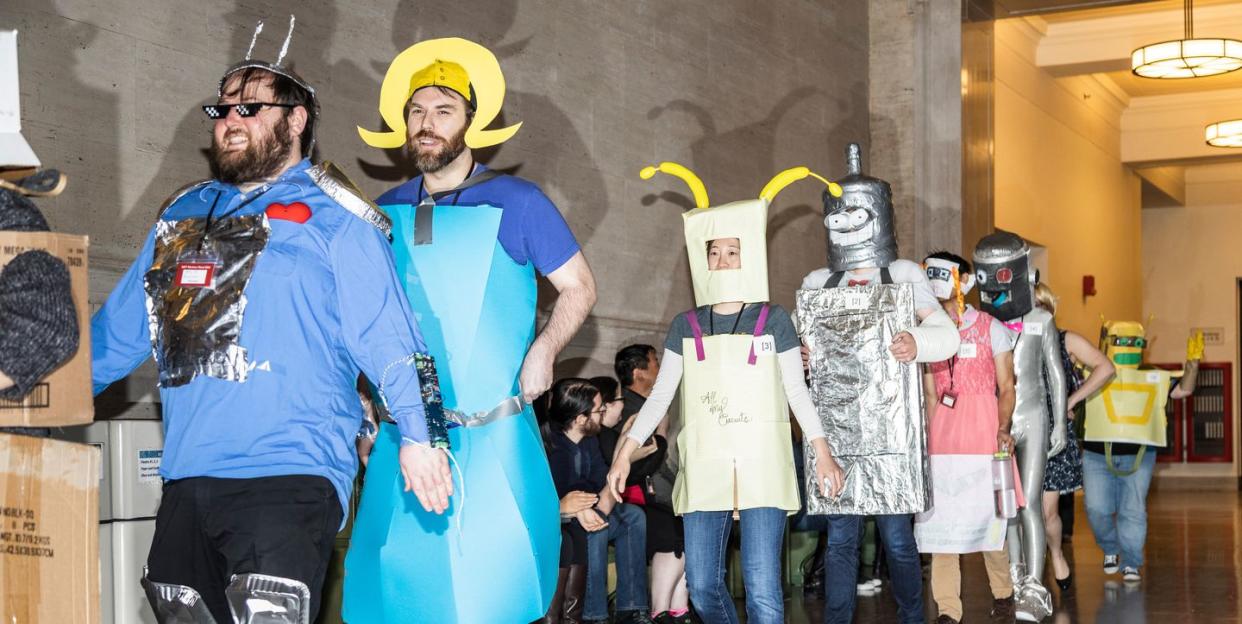
It’s hour 25, and Chris Harris is starting to sweat.
He’s staring at a list of more than 150 teams, projected on a wall in the Vannevar Bush room at the Massachusetts Institute of Technology (MIT). Next to the team names—menacing monikers like “Palindrome,” “Death and Mayhem,” and “✈️✈️✈️ Galactic Trendsetters✈️✈️✈️”—are groups of circles. Each time a team solves a puzzle, the problem’s corresponding circle turns green. Harris knows which puzzle is his, and no one has cracked it yet.
Eventually, though, someone will. Someone will solve every puzzle, just under 200 of them, in this year’s Mystery Hunt, a 40-year-old MIT tradition held mostly indoors over a frigid weekend in January. Approximately 3,500 people compete, many online but most in classrooms, lecture halls, and laboratories on MIT’s campus. Teams range in size from two people to more than 100. Some include MIT undergraduates, faculty, and alumni. Others have no connection to the university at all.
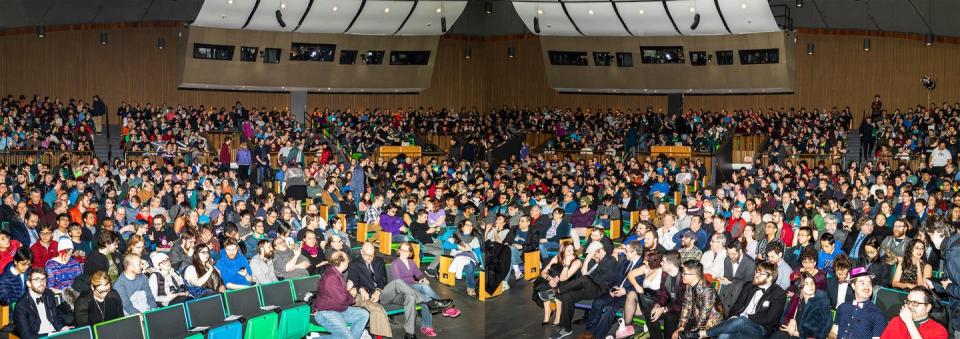
The unifying principles are simple: a love of puzzles and a willingness to solve them on a punishing schedule. The Mystery Hunt kicks off at noon on a Friday, and goes until one team reaches the end and finds a hidden coin. That usually happens sometime on Sunday, and there isn’t much sleeping in between. The puzzlers are delirious by the time they claim their prize, which isn’t cash, but arguably something cooler—and easily more agonizing: the responsibility of writing next year’s hunt.
The Hunt Begins
The first Mystery Hunt began in 1980, when Brad Schaefer, a bored MIT graduate student stuck on the Cambridge campus over winter break, devised a 12-puzzle scavenger hunt for his friends. In the early years, it was simple: solve a packet of puzzles, find the coin, win a keg of beer or another prize totaling up to $70. But word of the event soon spread, and as participation grew, so did the scope.
A modern Mystery Hunt includes elaborate themes, storylines, events, video production, web design, and physical puzzles. The writing team, working in conjunction with members of MIT’s Puzzle Club, routinely has tens of thousands of dollars at its disposal—a mix of MIT funding and private and corporate donations.
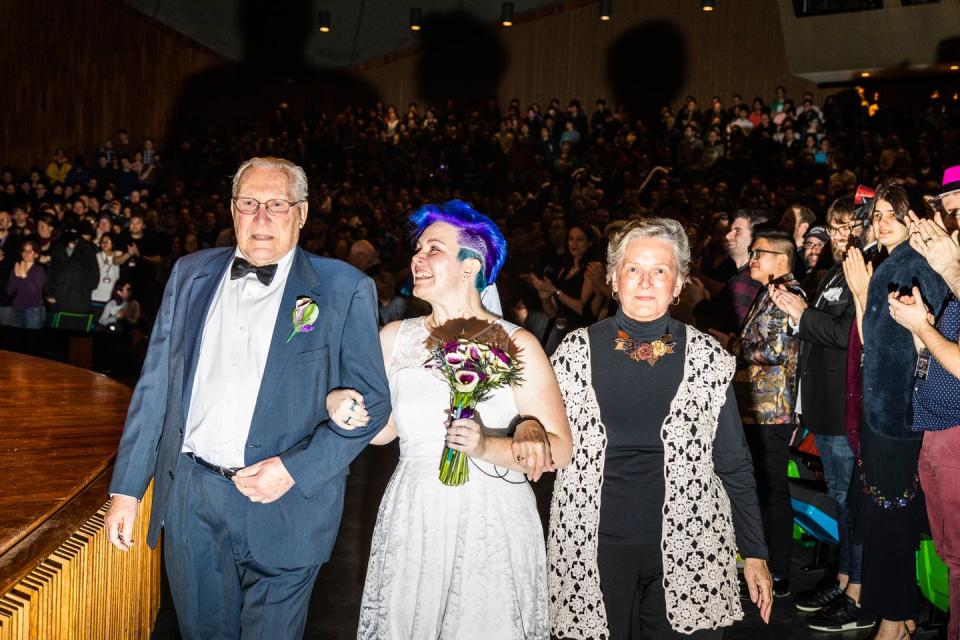
The theme is a closely guarded secret, kept under wraps until the kickoff event in a campus auditorium. This year’s edition begins with the wedding of Mark Gottlieb and Gaby Weidling, a pair of professional puzzle and game designers who join puzzlers like Harris on Left Out, the 2020 writing team. Gottlieb says it was the Mystery Hunt that brought him to MIT as an undergraduate in the 1990s.
“I thought puzzles were for kids—I had no idea there were puzzles for adults,” he says. “I was looking at engineering schools, and I read an article on the Mystery Hunt and was like, ‘I have to do this.’” Gottlieb has now competed in dozens of Hunts and written a handful (including one by himself, in the early ‘90s, “when that was possible”).
After Gottlieb and Weidling exchange vows, they announce their gift to the attendees: All are invited along on the honeymoon, to the once-great Penny Park, an amusement park that has fallen into disrepair and can only be saved through the efforts of several thousand puzzle solvers.
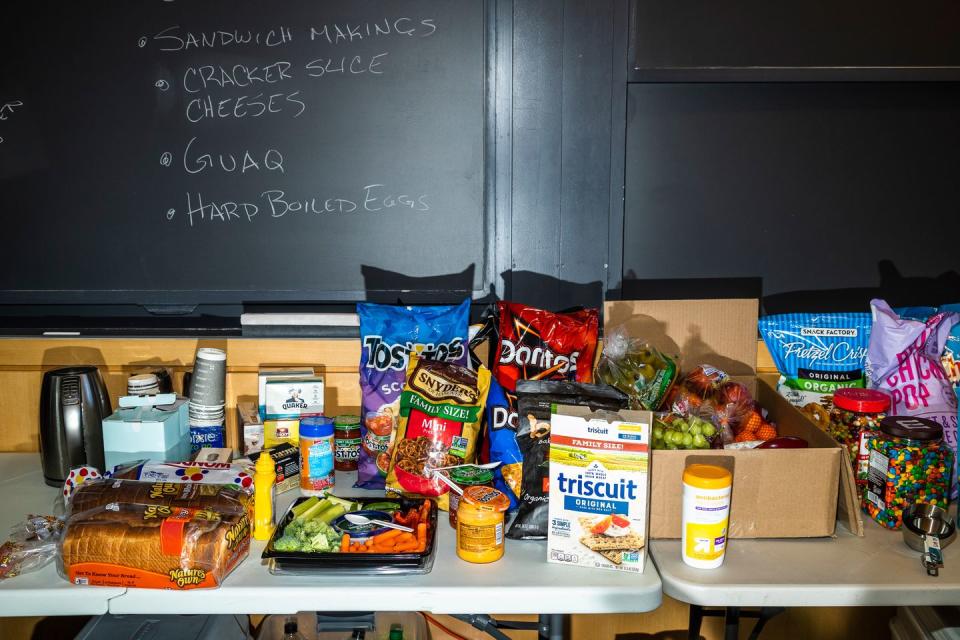
The affair is delightfully kitschy, and the whole weekend feels that way, like “Mensa Goes to Summer Camp.” As teams head to their classroom headquarters, Left Out launches the Hunt website, an interactive park map loaded with rides and attractions, each of them a puzzle more difficult than the last.
Finding Our Purpose in Puzzles
Puzzles have a history as long as human civilization. The biblical kings Solomon and Hiram were known to organize riddle contests, and one of the oldest mathematics books, which dates to 1650 B.C., is basically a collection of brain teasers.
“I cannot think of another artifact of human history so meaningful as puzzles,” says Marcel Danesi, the author of several puzzle books and the professor of a course at the University of Toronto called Puzzles, Discovery, and the Human Imagination.
It’s impossible to overstate what puzzles mean for “language, the mind, psychology, and philosophy,” Danesi says. “It’s the larger, broader question of what meaning is in life, and how we search for it. We look at puzzles as recreation, but they carry with them archetypes about our world.”
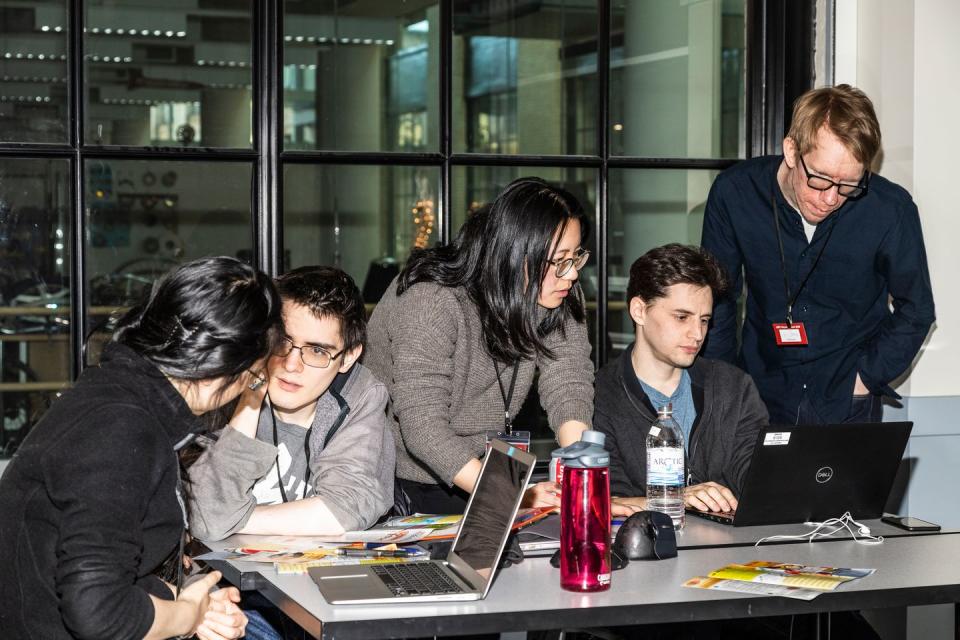
Consider the river-crossing problem, a classic puzzle that shows up in the folklore of a number of nations as early as the ninth century. In the medieval version, it features a wolf, a goat, and a head of cabbage. It goes like this: A man goes to market and returns with the two animals and the vegetable. He comes to a river, where he rents a boat. He has to get all three across, but can only take one at a time. If he takes the cabbage first, the wolf will eat the goat. If he takes the wolf first, the goat will eat the cabbage. The only solution is for the man to take the goat first. Then, on his subsequent trips he can take the cabbage, return with the goat, take the wolf, then row the goat across a second time.
The river-crossing problem encapsulates decision-making, Danesi says.
“It’s a unique human thought: How do I get this going without disaster? That puzzle, which every mathematician in the Renaissance knew, gave us an idea and it changed the world. Who’s to tell me that archetype has not led to evolution in science and technology? Once you find the solution to a puzzle, once that river is crossed, then it becomes a science.”
But it’s not just the pursuit of scientific advancement that draws people to puzzles. Studies have shown a direct link between solving a puzzle and the release of dopamine in the brain. And that happy bit of neuroscience goes both ways: Being in a good mood or being excited by the prospect of doing a puzzle makes people better solvers.
Even more research suggests puzzles are emotionally and physically good for you. Last year, a study published in the International Journal of Geriatric Psychiatry found that older adults who regularly do word and number puzzles had the grammatical reasoning ability of a person 10 years younger, and the short term memory of a person 8 years younger.
Puzzles are still at the heart of learning, as our earliest lessons in logic and reasoning come from puzzle toys and games. Basic problems teach decision-making and hypothetical thinking—the abilities, Danesi says, that define us as human.
“Animals are great problem solvers, but not puzzle makers,” he says. “We make them up, using our imaginations. They really reflect how we think. In other words, you want access to the human mind? Look at our puzzles.”
The Thrill of the Pursuit
Very few teams registered in this year’s MIT Mystery Hunt are playing to win. In fact, the majority don’t even expect to finish. Most crews simply aren’t capable; each puzzle takes between 100 and 150 minutes to solve, meaning a small team could take more than 500 hours to get through the hunt.
“We’re never going to keep up with the brain power of a team with more than 100 people on it,” says Dan Moren, of the mid-sized team Grand Unified Theory of Love. “The overriding philosophy for us is just to have fun.”
For the larger teams, where a group’s collective solving power means a puzzle is finished every 12 to 20 minutes, the choice of whether to pursue victory is complicated. “The reward for a job well done,” Moren explains, “is another job.”
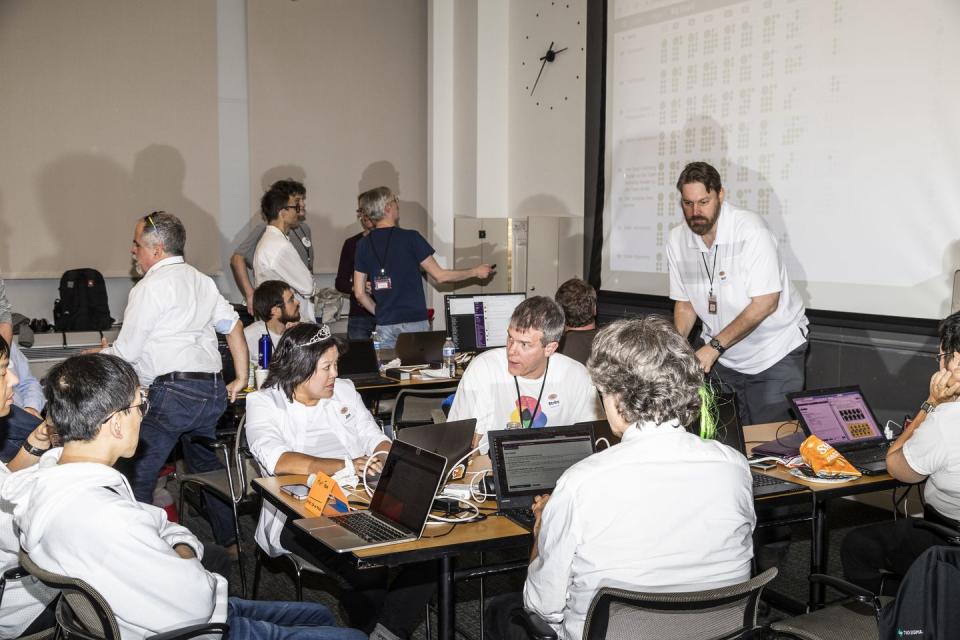
Building a Mystery Hunt is no easy feat. To create Penny Park, Left Out invented 10 themed “lands,” including Spaceopolis, the Storybook Forest, Safari Adventure, and Cascade Bay. Each land contains a group of puzzles that range from crosswords and acrostics to cryptograms and engineering problems. There’s a puzzle that requires solvers to have knowledge of both classical ballet and advanced algebra. More than one solution calls for teams to write a software program.
“The Excelerator,” a puzzle in the waterpark-themed Cascade Bay, is a 700,000-cell Excel spreadsheet. (Stop reading now if you want to solve it on your own.) At first, it seems daunting, but the first instruction begins in cell A1, with the message: “FIND ELEVEN STARTING POINTS.” From there, it’s easy to spot 11 cells with their letters colored red. Each is the starting point for a clue phrase like, “MOUNTAIN FAMOUS FOR BEING INCREDIBLY HIGH.” Connecting the trigrams to spell out the phrase draws a letter, and leads you to the next clue’s starting point (in this case, cell K2). The answer to each fourth clue is a number, rather than a new trigram. That’s your cue to move to the next set.
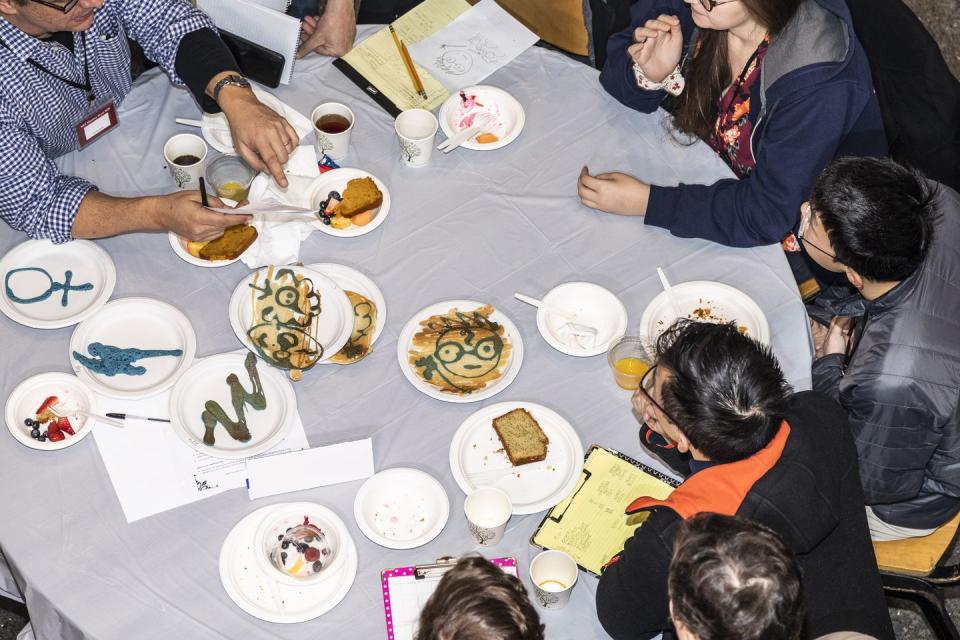
Eventually, you’ll have solved your way to 11 four-letter words and 11 numbers. The numbers correspond to rows, and you can break each word down into letter pairs that correspond to columns. For instance, the answers from the first group of clues, AHAB and 764, should lead you to row 764, between columns AH and AB, where you’ll find yet another clue phrase: “FLOWER BUSH OF GENUS RHUS.” The answer to each of these clues—that one is SUMAC—is an Excel formula followed by either a column or cell reference. Calculate them, like the SUM of column AC, and you get a string of numbers between 1 and 26. Convert to their corresponding alphabet letters and you have the ultimate solution: the phrase, “LINE NUMBERS.”
Of course, not every puzzle is that tough. In the Cactus Canyon area of the map, a puzzle called Flat Stanley (again, skip this part if you want to solve it yourself) features 21 of the classic paper dolls dressed in the costumes of Marvel creator Stan Lee’s famous movie cameos. After identifying each movie, you must match each doll with one of the price-tagged accessories drawn below. Index the amount on the price tag into the movie title to get a letter, and you eventually end up with the phrase, “FRENCH MAGAZINE CHARLIE,” and the answer, “HEBDO.”
Harris’s puzzle—the one giving the rest of the field fits—is called FOCUS!!, and it features eight blurry images and only one clear picture, all from Google Street View. (You know the drill; spoilers ahead.)
“There’s enough information in each blurry photo to figure out where each one was taken,” Harris explains. Plot them on a map, and you get a vague circular shape, stretching across North America, with the coordinates for the clear image inside. “You realize, ok, this is an ellipse, and you need to figure out where the other focal point is.”
Use the Google Distance Finder tool and a bit of math, and you land on a spot outside Evansville, Illinois. Fire up Street View one more time, and you’ll find that spot is home to a giant statue of Santa Claus. In the Creative Pictures Studios movie-themed land, the answer to each puzzle isn’t a word or phrase, but an emoji. The answer to Harris’s puzzle—which, to his relief, a number of teams do eventually solve—is “🎅.”
And it goes even deeper: Each land’s puzzle solutions form a whole new puzzle. (In Mystery Hunt lingo, that’s a “meta-puzzle.”) Lots of teams won’t solve a single meta over the course of the weekend. The front-runners will solve them all. And, on top of writing and testing all those puzzles and metas, the writing team is also tasked with keeping things interesting. Throughout the weekend, events like a character breakfast, carnival games, and a robot parade offer teams the chance to add to their solution count. Occasionally, teams are delivered a physical puzzle, like a balloon full of shapes from the “balloon vendor,” a custom-designed board game, or a box of puzzle-stuffed fortune cookies.
An elaborate, well-developed storyline connects it all, and park characters often drop in on teams to deliver more puzzles—or, more importantly, hints. After all, says Todd Etter, the Director of the 2020 Hunt who wrote both the Excelerator and Flat Stanley puzzles and is currently dressed as Kopek the Clown, a puzzle hunt is really only fun if someone wins.
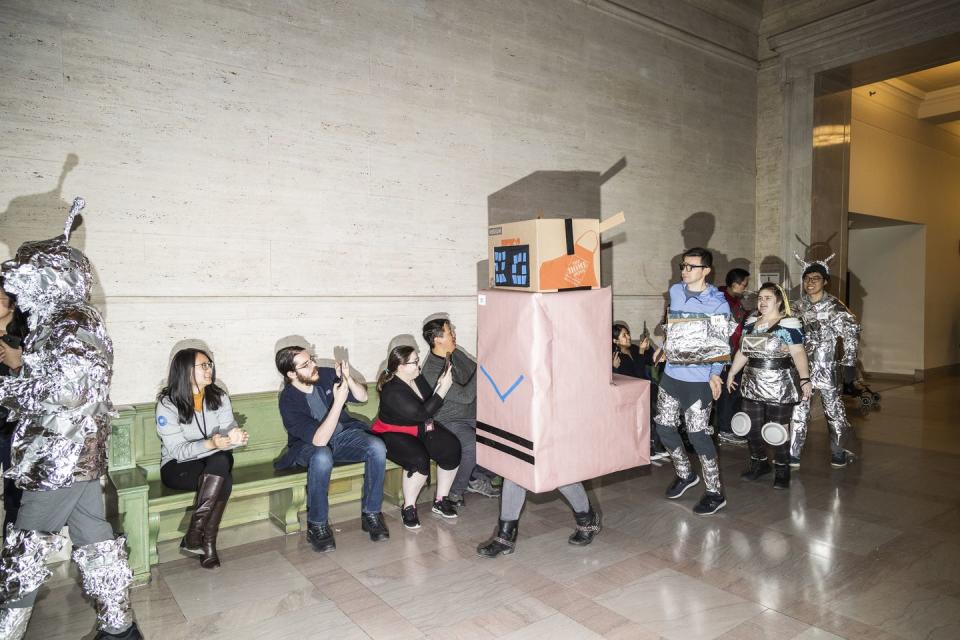
“If you’re a great constructor, you have to think like a solver,” Etter says. “You have to know, ‘What breadcrumbs can I dangle in my puzzle to give people just enough information to not get frustrated?’ How much information can I withhold for it to be fair, but also for the payoff to be worthwhile? The last thing you want to do is have the payoff be so high, but have it be so hard that no one solves it. And that’s your fear: that you’ve done all this work, and you’ve made it too hard.”
Things Change, but Puzzles Stay the Same
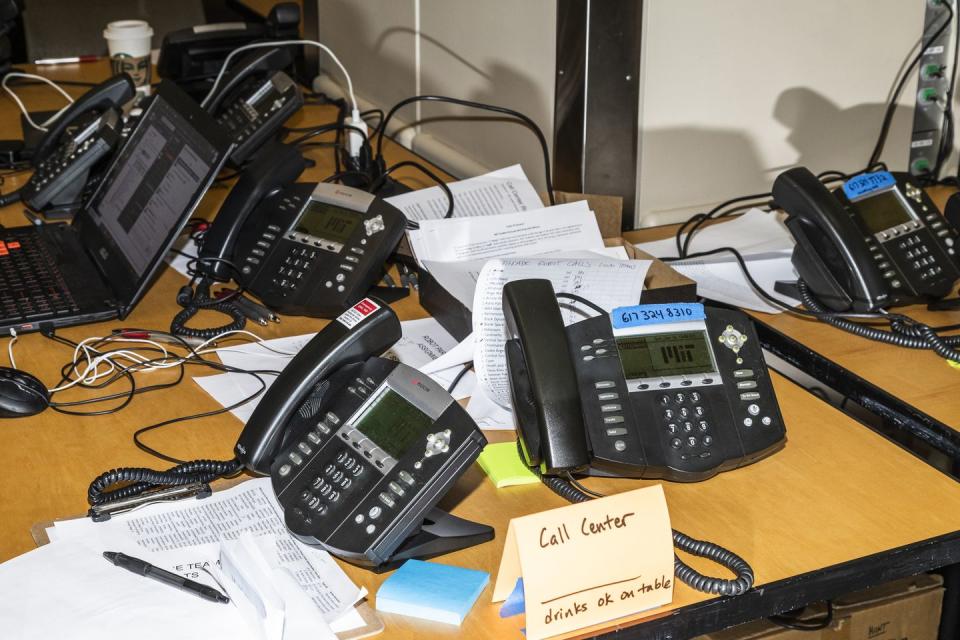
A well-constructed puzzle, Gottlieb says, is a work of art. But trends in the art world come and go, and puzzling has seen plenty of changes since the Mystery Hunt’s early years.
“I wrote the 1995 Hunt and the 1997 Hunt, when the internet had just become a thing people had access to,” he says. “I wrote a puzzle I was very proud of. It was a double crostic where you had three things and you had to figure out what they have in common. I remember I listed three people who happened to be members of the Hartford Whalers hockey team. What I hadn’t counted on was that [early search engine] AltaVista existed and you could just type those things in. It was like, ‘Oh, we’re in a different era now.’”
Today, technology is a major part of the Hunt. The bigger teams use programs with names like “PuzzleBoss” to scrape information from the Penny Park website into spreadsheets and shared documents. In the Bush Room, Left Out uses an intricate back-end system to track and compare data on each team’s rate of solving, make predictions, and release new puzzles. And, of course, in almost every puzzle there’s something that simply needs Googling.
But however much things have changed, the Hunt’s spirit of “community and curiosity” remains, Gottlieb says. “You can design challenging, innovative, never-before-seen, difficult, easy, and hybrid puzzles, and computers are going to help you. It’s just new tools. Puzzles don’t change—but the tools do.”
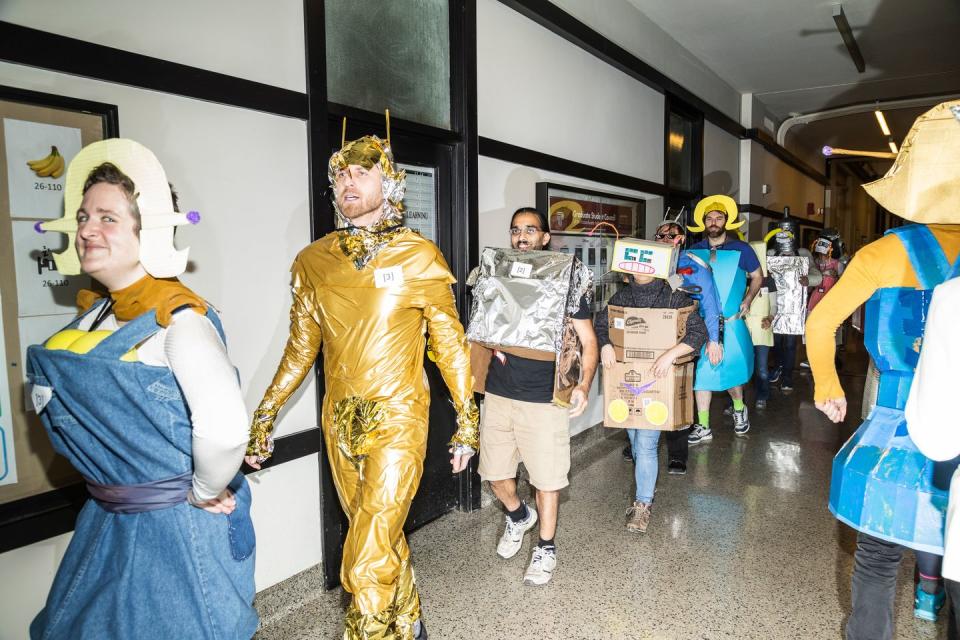
In the center of a room in MIT’s basement, a huge contraption of hoses and valves beeps as it belches thick smoke. Lights flash white and purple as a member of ✈️✈️✈️ Galactic Trendsetters✈️✈️✈️ —the airplane emojis are pronounced with a whooshing sound—reaches inside to retrieve the coin. It’s Sunday afternoon, just after 3 p.m., and the 2020 MIT Mystery Hunt has just ended with a scene like something from a kids’ adventure movie.
It’s a thrilling ending, and though only five teams will see it before the Hunt is officially declared over, it’s a fitting finale to a weekend of elegant, hard-earned solutions.
“In a perfect puzzle, every piece of information is used,” Gottlieb says. “There’s nothing extraneous. Everything connects. A perfect puzzle results in a moment of clarity and euphoria.”
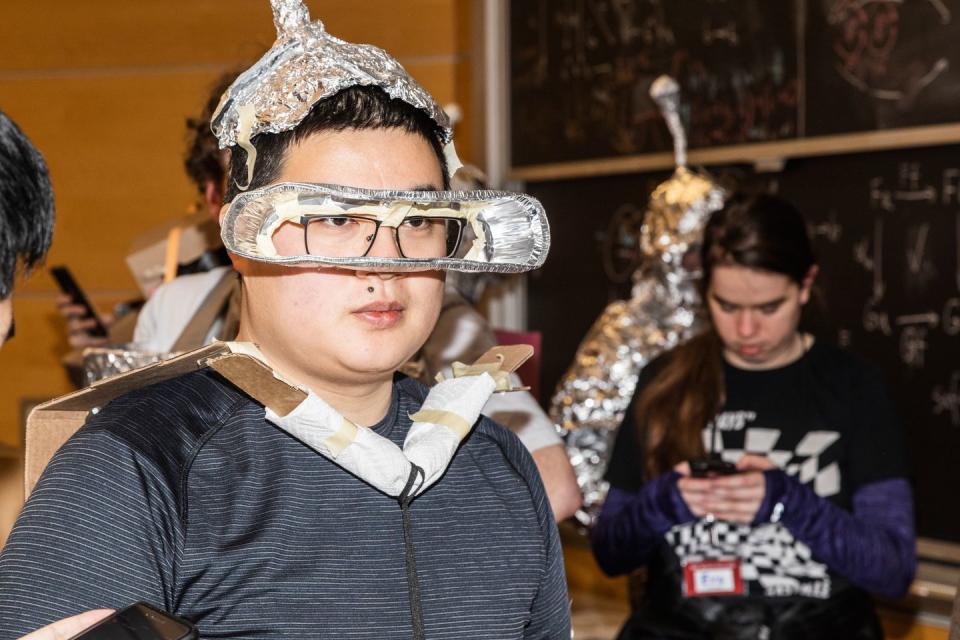
To solve is to chase that high, and most of these participants will compete in other puzzle events throughout the year. A handful of universities around the country host annual hunts, and tech titans like Microsoft and Google also run similar games.
“There’s a vibrant puzzle community in Silicon Valley, Seattle, and any place where there’s a lot of tech industry,” says Gottlieb. “Where there’s a lot of coders, there’s a lot of puzzlers.” But next January, they’ll all be back in Cambridge, ready to see what ✈️✈️✈️ Galactic Trendsetters✈️✈️✈️ has planned for the puzzle event of the year.
“We’re just grown up kids, all just playing,” Etter says, pulling off his clown nose. “We’re doing it for love of the game.”
You Might Also Like

